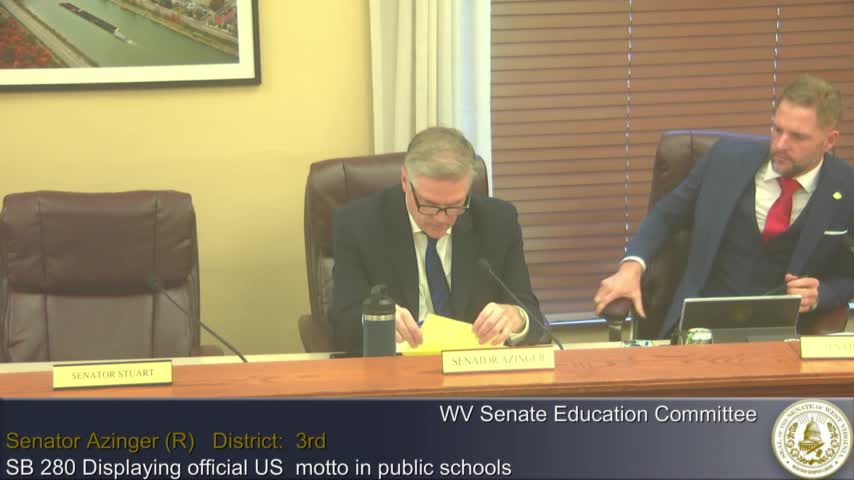Committee approves expanding nontraditional instruction days from five to ten, adopts amendment protecting 'out of calendar' dates
March 06, 2025 | 2025 Legislature WV, West Virginia
This article was created by AI summarizing key points discussed. AI makes mistakes, so for full details and context, please refer to the video of the full meeting. Please report any errors so we can fix them. Report an error »

A committee substitute expanding counties' ability to schedule nontraditional instruction days was agreed to by the committee and reported to the full Senate with a recommendation that it pass after members adopted a conceptual amendment clarifying the use of calendar days.
Under the proposed substitute, county school boards may opt to include up to 10 nontraditional instruction (NTI) days on the school calendar. NTI days permit a county to deliver instruction through alternative methods (for example, packets or online activities) when schools are closed for inclement weather; teachers are required to be available via phone, text, or email or by other county-determined methods during those days.
Counsel explained the committee substitute: "The proposed committee substitute for this bill increases from 5 to 10 days, commonly referred to as nontraditional instruction days. A county board can deliver instruction through alternative methods when schools are closed due to inclement weather, and those days are still to be considered as instructional days." Counsel added that NTI days must be scheduled on the calendar in advance and that superintendents retain discretion about whether to use them.
During discussion, senators noted this winter's unusually heavy cancellations and said additional scheduled NTI days could prevent the need to tack make-up days onto the end of the school year. A senator said NTI days generally involve review work rather than new instructional material and emphasized that counties are not required to use all scheduled NTI days.
Members also debated "out of calendar" (commonly called "red days") dates that families use to plan travel. A conceptual amendment offered by the senator from Taylor struck language in subsection E that would have allowed scheduling instruction on "out of calendar" days; the amendment was agreed to by voice vote. The committee then agreed to the committee substitute as amended and the vice chair moved to report the substitute to the full Senate with the recommendation that it do pass; the chair declared the motion adopted by voice vote.
The committee record does not show a roll-call tally for the votes; actions were taken by voice vote.
Under the proposed substitute, county school boards may opt to include up to 10 nontraditional instruction (NTI) days on the school calendar. NTI days permit a county to deliver instruction through alternative methods (for example, packets or online activities) when schools are closed for inclement weather; teachers are required to be available via phone, text, or email or by other county-determined methods during those days.
Counsel explained the committee substitute: "The proposed committee substitute for this bill increases from 5 to 10 days, commonly referred to as nontraditional instruction days. A county board can deliver instruction through alternative methods when schools are closed due to inclement weather, and those days are still to be considered as instructional days." Counsel added that NTI days must be scheduled on the calendar in advance and that superintendents retain discretion about whether to use them.
During discussion, senators noted this winter's unusually heavy cancellations and said additional scheduled NTI days could prevent the need to tack make-up days onto the end of the school year. A senator said NTI days generally involve review work rather than new instructional material and emphasized that counties are not required to use all scheduled NTI days.
Members also debated "out of calendar" (commonly called "red days") dates that families use to plan travel. A conceptual amendment offered by the senator from Taylor struck language in subsection E that would have allowed scheduling instruction on "out of calendar" days; the amendment was agreed to by voice vote. The committee then agreed to the committee substitute as amended and the vice chair moved to report the substitute to the full Senate with the recommendation that it do pass; the chair declared the motion adopted by voice vote.
The committee record does not show a roll-call tally for the votes; actions were taken by voice vote.
View full meeting
This article is based on a recent meeting—watch the full video and explore the complete transcript for deeper insights into the discussion.
View full meeting